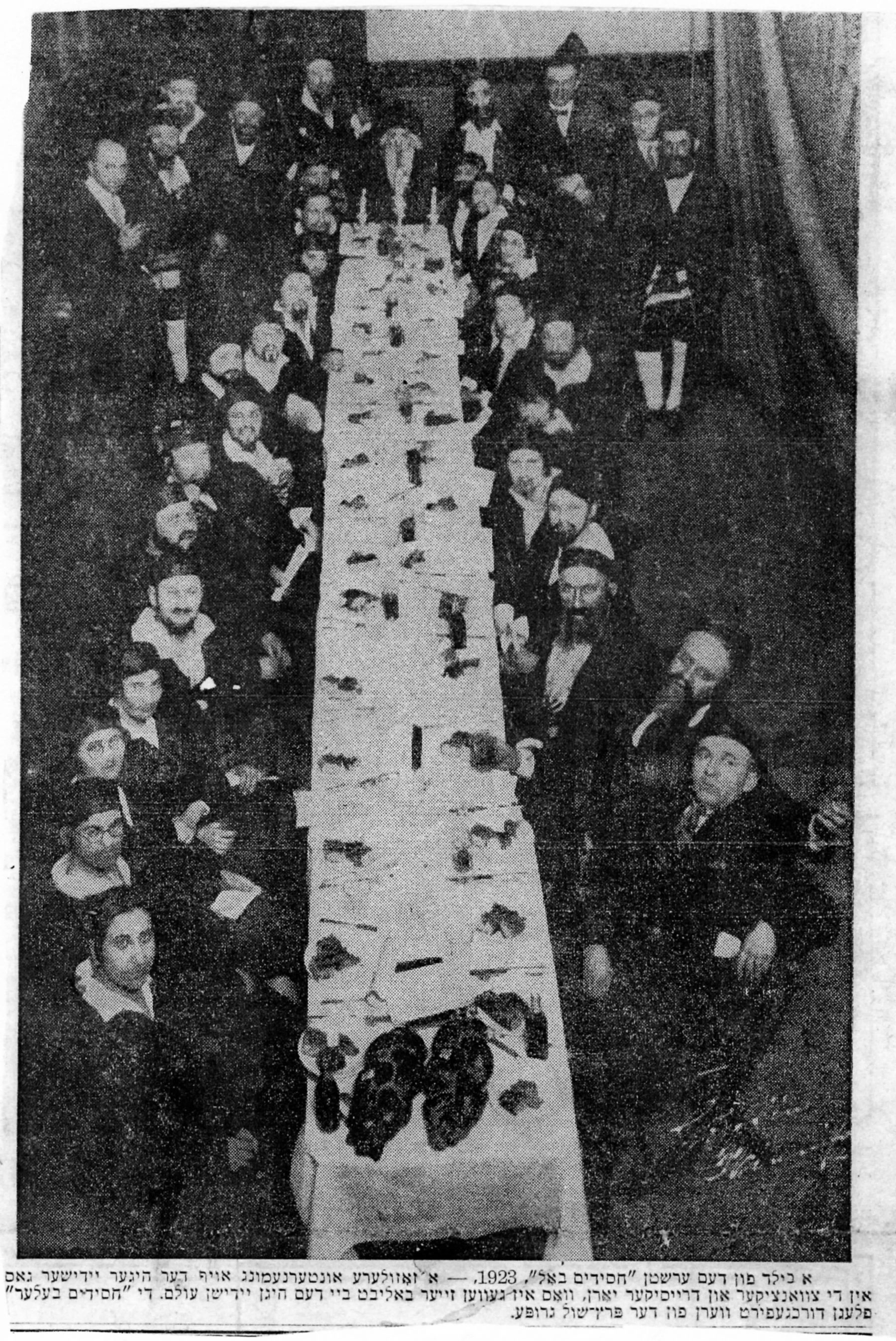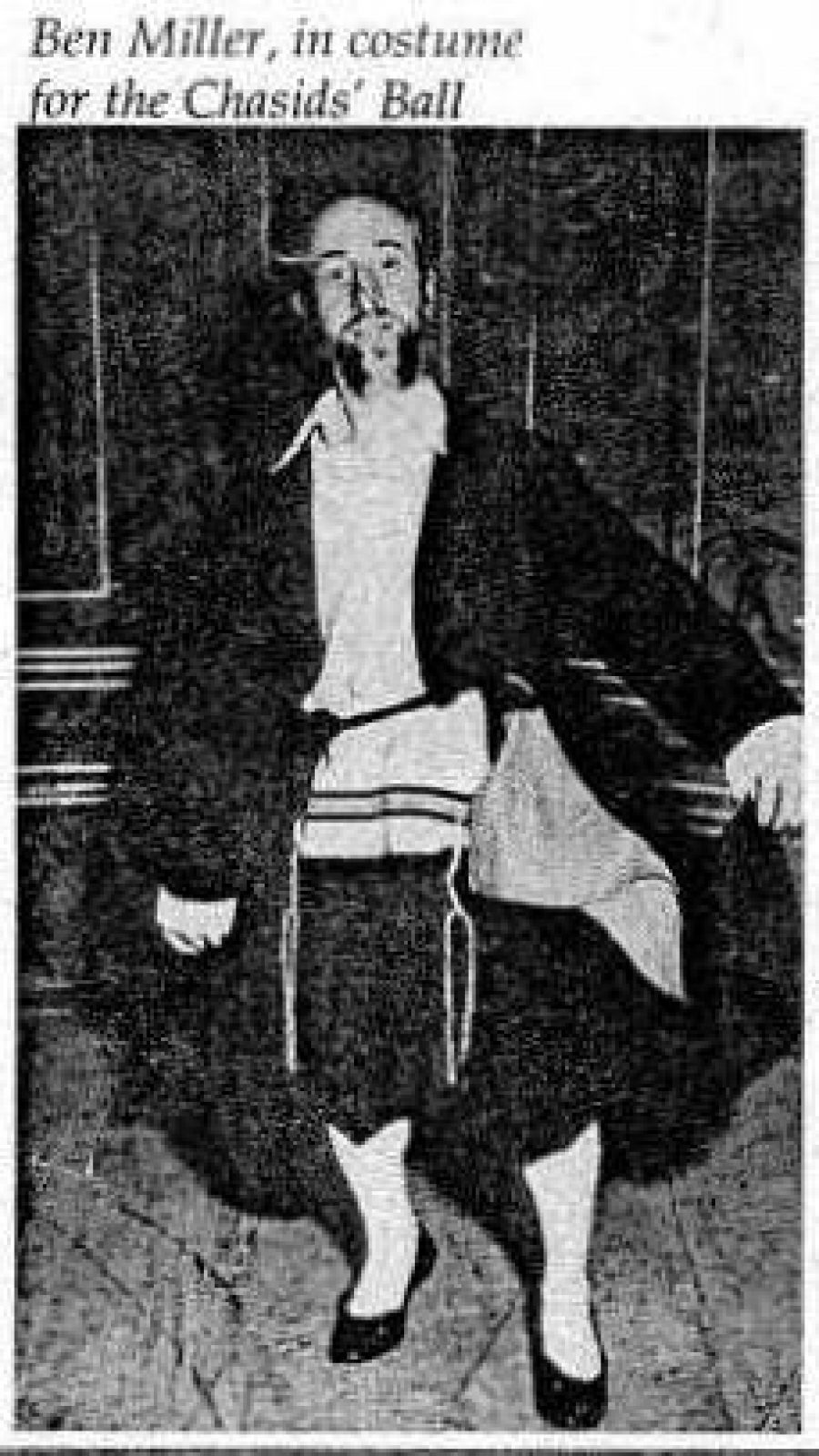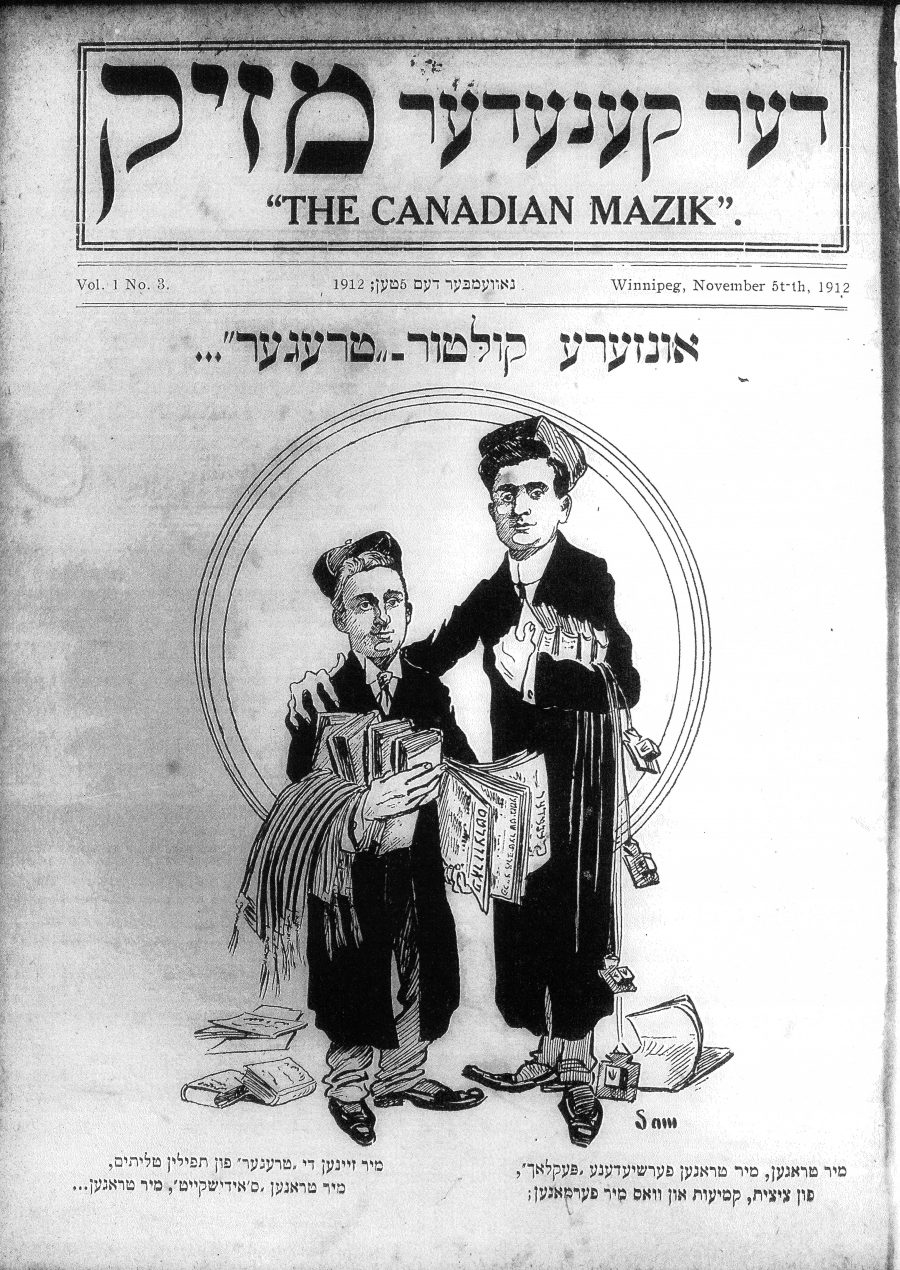
1923 Chasidim Ball, Winnipeg. Courtesy of the Jewish Heritage Centre of Western Canada.
The Chasidim Ball
Faith Jones
1921, Cleveland
1923, Winnipeg
1925, Milwaukee
1928, Boston? (exact location unclear)
1933, Calgary (the second annual!)
1933, Winnipeg again

1923 Chasidim Ball, Winnipeg. Courtesy of the Jewish Heritage Centre of Western Canada.
These are the fleeting references I’ve found regarding a peculiar cultural phenomenon. In each case, a “Chasidim Ball” was held to raise funds for Poale Zion, or for the Peretz Shule: never for any actual religious organization (because, logically, why would Hasidim need to hold an annual “Chasidim Ball”? They would just call that a simkhe).
Here’s the first mention I found of it, a recollection by the daughter of the family that owned the Yiddish-language bookstore in Winnipeg:
I wonder sometimes whether my father was best know as the proprietor of the People’s Book Store, or as the “Chasid” who danced on the table. The dancing took place at the “Chasidim Ball,” an annual event in Winnipeg for some ten years, and Bernard Miller, doing the “Kozatchke” on a table full of dishes or glasses, was one of the highlights of the celebration.

Bernard (“Ben” or “Berl”) Miller, dressed as a Hasid for the annual ball, Courtesy of the Jewish Historical Society of British Columbia.
The Milwaukee Jewish Chronicle, January 30, 1925, has this poetic description of their event:
POALE ZION TO HOLD CHASIDIM BALL, FEB. 28 Poale Zion and the Nachmin Sirkin Branch of Young Poale Zion will hold a Chasidim Ball, Saturday evening, February 28, in Kilbourn and Juneau Halls of the Milwaukee Auditorium. Those who know what a rich and poetic part the Chasidim played in the Jewish national life need not be urged to attend this ball. For the benefit of those who are not familiar with this picturesque element of our people, a vivid reproduction will be staged showing one Rabbi Schloimele from Poilatzinevke, with this Talmudim and grandson at his side. A host of Chasidim from all corners of the world, dressed in their traditional costumes, will sing and dance. A special orchestra, well versed in the music of the Chasidim and modern music as well, will furnish the music. There will be plenty of the modern dancing for the benefit of the young people as well.
So, you see, not just quaint and folkloric, but educational as well! The Wisconsin Historical Society has a picture of this event, showing both men and women dressed as Hasidic men. I guess for women, dressing as Hasidic women (which would be what? long skirts and sheytls?) would hardly constitute being in costume at all. And I’m sure the men didn’t want to give up the table-dancing opportunities by dressing as women either.
The one in Winnipeg seems to have lasted at least from 1923 to 1933. Unlike Milwaukee, in Winnipeg there doesn’t appear to have been any pretense that this was meant to be either an homage or a history lesson: Berl Miller belies that idea. A tiny man with a huge personality, Miller was popular in Winnipeg’s Jewish community. His bookstore was a meeting place and an organizing hub for union and left-wing causes. In fact, at the time of the first Chasidim Ball in Winnipeg, he had already been imagined as a kind of modern Hasid, bringing the Torah of secular news and books to the people of Winnipeg. On the cover of an early edition of the Kanader Mazik [The Canadian Brat], a short-lived satirical weekly, Miller and his then-partner, Joshua Gurevitch, embody all the community’s duality: religious and secular, traditional and modern.

Berl Miller and Joshua Gurevitch of Winnipeg’s People’s Book Store are gently lampooned. Image courtesy of YIVO.
“Our Culture-Peddlers,” the title proclaims. And below: “We peddle, we peddle assorted bundles/of tzitzit, good-luck charms, whatever we’ve got/We are the peddlers of tefilin, tallises/we peddle ‘Jewishness,’ peddle a lot.” Note, however, what they’re carrying: copies of the Forverts, Fraye arbeter shtime, and Kanader adler, plus piles of books that look suspiciously closer to the size of novels than volumes of Talmud. Wrapped in Jewish tradition, they are peddling modernity.
Then what were the Chasidim Balls? Presumably it was a way to blow off steam, and a way to make an in-joke only Jews would understand. While enjoying the old-world simkhe atmosphere, they could also make a clear distinction between their old-world selves and their new identities. The Balls say, “We’re not like that—we are modern.” But they also say, “The old world sure knew how to have fun.”